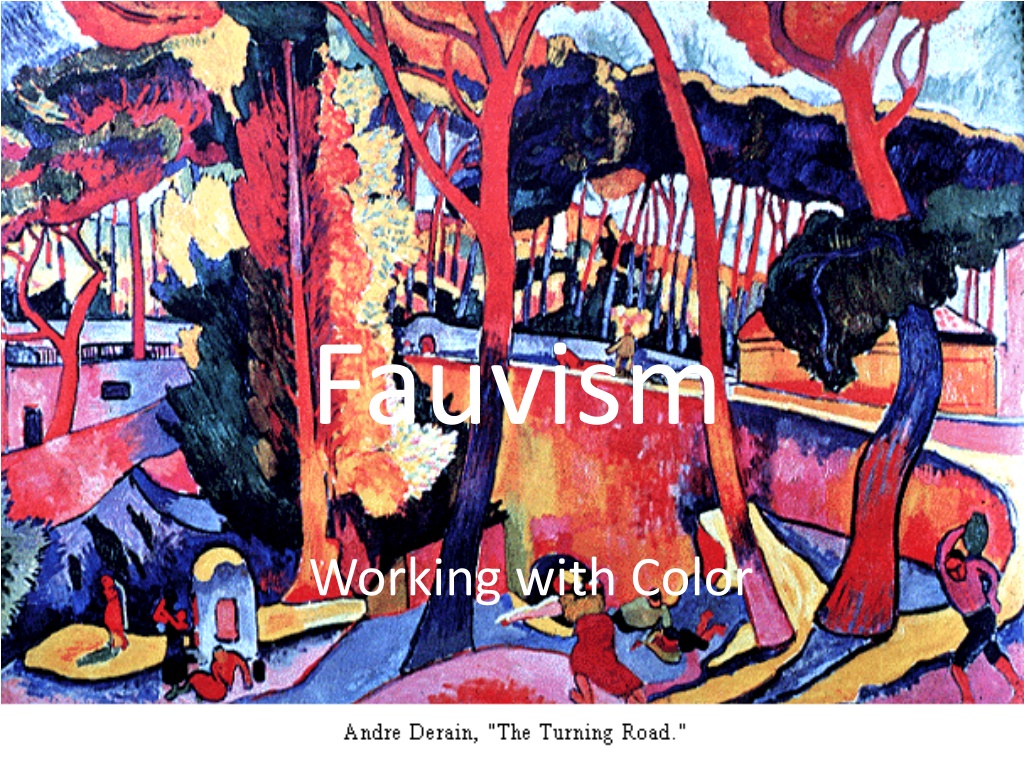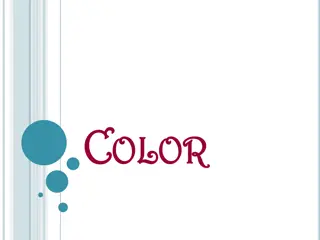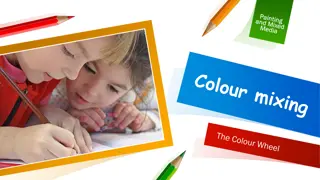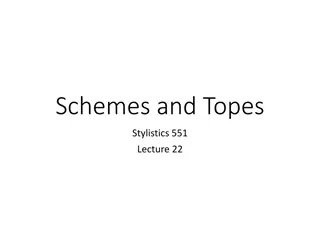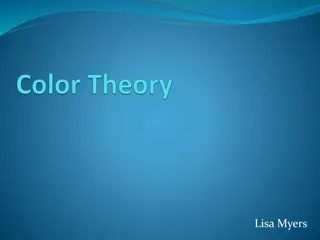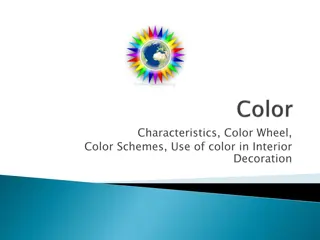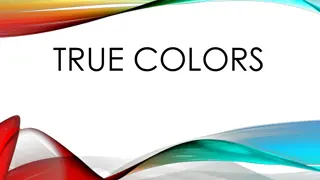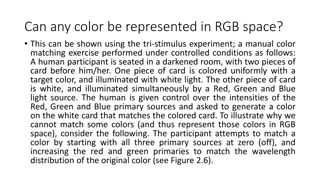Understanding Fauvism: Working with Colors and Color Schemes
Fauvism is an art movement known for its bold and arbitrary use of colors. Fauvist painters carefully selected colors to convey specific moods in their artworks. This guide explores Fauvism, color theory, and different color schemes to help you create your own expressive painting. Learn about complementary, warm or cool, and monochromatic color palettes and discover how to plan your color scheme effectively. Dive into the world of Fauvism and unleash your creativity with impactful color choices!
Download Presentation

Please find below an Image/Link to download the presentation.
The content on the website is provided AS IS for your information and personal use only. It may not be sold, licensed, or shared on other websites without obtaining consent from the author. Download presentation by click this link. If you encounter any issues during the download, it is possible that the publisher has removed the file from their server.
E N D
Presentation Transcript
Fauvism Working with Color
Fauvists used ARBITRARY colors in their paintings (colors not related to nature). However, this did not mean that they just painted things any colors that they wanted. The color selection was still thoughtful, purposeful, and projected the mood of the location. Your painting will do the same thing.
Possible Color Schemes Complementary color palette Colors are located across from each other on the color wheel When placed next to each other, they make each other appear brighter Red - Green Purple - Yellow Blue - Orange Black - White
Possible Color Scheme Warm or Cool colors Warm colors are- Red, yellow, and orange They are vivid, energetic, and seem to advance in space Cool colors are - Blue, green, and purple They have a calming effect and seem to recede in space
Possible Color Scheme Monochromatic Tints and shades of one color
In your painting, colors will be arbitrary but you will also have to chose a color scheme and explain why you chose it and how you used it. What color schemes are good for what types of moods? What type of mood are you trying to create in your painting?
Assessment Your painting will be assessed on the following aspects: Fauvist qualities Horizon line dividing paper in Flat and simplified (but not boring) details both above and below the horizon line Painted in an arbitrary color scheme Explanation of the color scheme and why you chose it Effort- interesting and well-thought out composition Craftsmanship- Neatly painted Neatly outlined No white spots
Painting Procedures: Plan your colors first Wear a smock Take ONE color at a time Your paint blob should be about the size of a quarter or smaller! Do not take paint bottles to your table Clean up reminders: Plates go in the garbage Rinse brushes COMPLETELY and store them bristles FACE UP. Wash AND dry any paint on your table.
